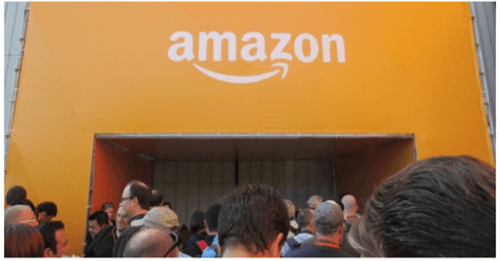
In a Santa Monica Airport hangar on Thursday, Amazon announced its latest round of Kindles and related services. Overall, they look pretty impressive.
After a big corporate self-hug as CEO Jeff Bezos took the stage, Amazon focused on three key items: new Kindle Readers, new Kindle Fires, and enhancements to the Amazon ecosystem tying them all together. (For more analysis on the new products and services, see What The New Kindle Means To Amazon.)
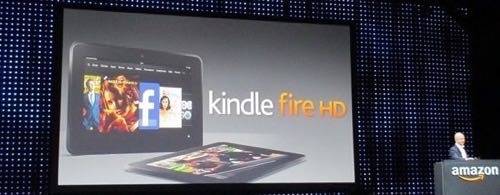
The New Kindle Fires
Amazon’s Kindle Fire line is getting a much-needed hardware boost designed to help it compete with Google’s Nexus 7 tablet and, to some degree, the iPad (more on that later). The entry-level, 7-inch Fire tablet is now priced at $159 (down from $199), with double the RAM and a claimed 40% speed boost.
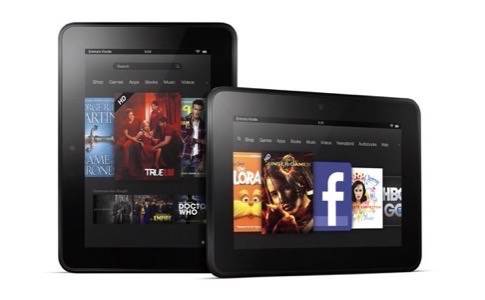
But the real story is the Kindle Fire HD units.
The 7″ Kindle Fire HD is a massive upgrade for $40, and is aimed squarely at the Nexus 7. It comes with 16GB of storage (with an optional upgrade to 32GB), a 1280×800 HD screen, dual-antenna dual-band Wi-Fi, Dolby Digital Plus audio, front-facing camera, stereo speakers and a zippy TI OMAP4 4470 Processor. Amazon estimates the 7″ unit’s battery life at 11 hours. Pre-orders are available now, and the Kindle Fire HD 7 is due to ship on September 14.
But wait, there’s more. Amazon also debuted a larger 8.9″ version aimed squarely at the Apple iPad, with prices starting at just $299. This 8.8mm thick, 20 oz. unit sports a 254 pixels-per-inch display with 1920×1200 resolution. It’s battery life should be somewhere below that of the 7-inch model when it ships November 20.,
Then there’s the Kindle Fire 8.9″ HD 4G, starting at $499. This model boosts the default storage to 32GB and adds a custom 4G LTE modem. Even more intersting, thought, Amazon’s base 4G data plan offers 250MB/month for just $50 per year – plus a $10 app credit. Power users will want to upgrade to more expensive 3GB/month or 5GB/month plans from AT&T, but the base package might be enough to let you download books and surf the Web when you’re not near a Wi-Fi connection.
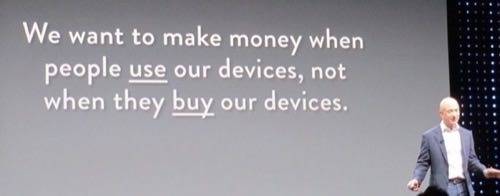
The Services
Bezos opened the event by saying that “people don’t want gadgets anymore. They want services.” And he explictly described the Kindle itself as a service.
There were also plenty of actual services announced, too, as Bezos tried to showcase an integrated Amazon ecosystem:
He showed Whispersync for Games, which saves game progress in the cloud so you can pick up your game on another device.
He demoed Whispersync for Voice, which lets you listen to an audiobook and then pick up where you left off in a regular e-book.
He showed X-Ray for video, which pulls content from IMDB and suggestions from the Amazon store when you pause a video on a Kindle Fire HD.
He got a round of applause from parents for Kindle FreeTime, which allows parents to set user-based time limits on different types of media (for example, unlimited reading, but only x hours of gaming).
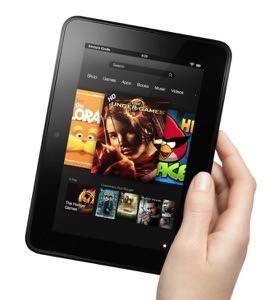
No single service will be reason for most users to buy a Kindle, of course, so Bezos also pressed what he saw as Amazon’s most potent weapon in the tablet wars: content.
No vendor other than Apple can offer a closed-loop ecosystem with as much content as Amazon has. If Bezos can bring that content to bear in a complete, high-quality system at an atttractive price point, Google will have a lot to worry about… and Barnes & Noble should be very, very scared.
The Kindle Reader
The big news for e-readers was the Kindle Paperwhite, a new device with a higher-resolution, front-lit screen. Amazon has upped the pixel density to 212 pixels per inch, and text really does look crisper than it does on previous generation readers. As a result, the Paperwhite offers greater font flexibility, and in a moderately well-lit room, even the smallest font size in a number of different fonts was perfectly readable at arm’s length.
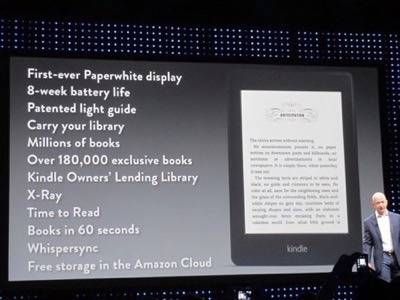
Unlike backlit screens, which project a light from toward the user, the Paperwhite’s front-lit screen mimics ambient lighting and creates 25% greater contrast than previous Kindle screens while using less battery power, the company said. Amazon claims eight weeks of usage with the light on between charges.
In theory, this should reduce eyestrain. Without time to test the unit under a variety of conditions, it’s impossible to confirm, but ad hoc tests of the demo system looked promising. There’s also a new feature called Time To Read, which estimates a running total of the time left in a chapter or book based on your reading habits, and X-Ray, a hyperlinked meta-glossary that allows readers to track characters, concepts and other information. For example, a user could jump from a passage to a character’s biography, then skip to each of her appearances in the book. This feature could be especially useful on textbooks.
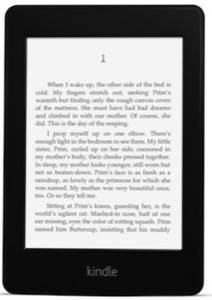
The Wi-Fi Paperwhite starts at $119, and the 3G version will retail for $179. Amazon also announced a refresh to the previous-generation, $79 Reader, with upgraded fonts, faster page turns, and a $10 drop in price to $69.
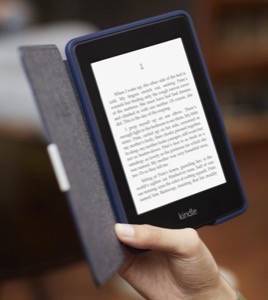
Images by Cormac Foster and Amazon.










